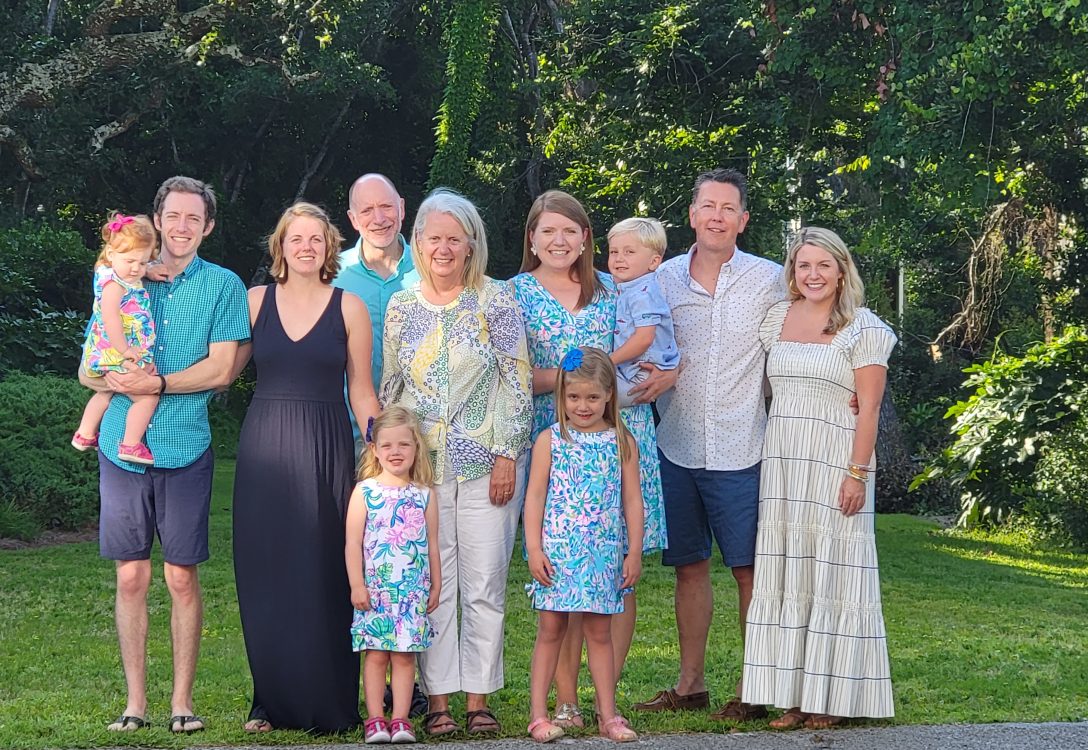On the afternoon of Thursday, May 23, I was driving toward Mt. Tabor Baptist Church on Fairmount Avenue in Richmond. At 5:30, a celebration related to the Richmond Metropolitan Habitat For Humanity’s (RMHFH) Unity Build would be taking place.
Guided by Richmond Habitat’s Community Engagement Manager, Burdette Robinson, the Habitat Faith Council team has been planning this event for months. Other than an increase in Richmond’s humidity, we had a pretty afternoon for the gathering.
The celebration was being hosted by the congregation and staff at Mt. Tabor Baptist. The church’s parking lot gave the celebration an accessible meeting spot and prime visibility on Fairmount Avenue.

Our team and the church members worked to set up a couple of tents, tables, chairs, and signage in the neighborhood. Food was provided by The Market At 25th.
For entertainment. Richmond’s best crowd pleaser, Jonathan The Juggler, kept us curious with his tricks and made us laugh with his humor. Madelyn Peay, Executive Director for Habitat, provided insightful comments about the organization’s work. Additionally, we met the new homeowner who will be moving into the Unity Build house this summer.
For the Unity Build, 24 houses of worship, nonprofits, and business pledged $42,000 toward this project. Richmond Metropolitan Habitat for Humanity serves the city of Richmond, and Henrico and Chesterfield counties. Director Peay shared how RMHFH is working to address the challenges they face in providing affordable housing.
Finding land and the rising cost of construction materials have pushed RMHFH to become even more strategic in implementing their plans. This means making the most of their limited financial resources.
In looking to the future, RMHFH leaders recognize the importance of equity, inclusiveness, diversity, innovation, and sustainability. These attributes apply to their day to day mission in working with homeowners, volunteers, partners, Habitat’s two retail outlets(ReStores), in-house systems, and Habitat employees.
It was clear from Executive Peay’s comments that she and her team are committed to helping solve the housing crisis in our communities. And to experience that commitment firsthand, we had the privilege of hearing from Erica her story about becoming a homeowner.
Erica’s journey is one of determined perseverance. For ten years, she and her family lived in a wide range of housing environments. Challenges with mold, infestation, and unkept properties made life difficult for her family. Despite these hardships, Erica never stopped pursuing her goal to become a homeowner.
As a part of the celebration’s program, all guests along with Executive Peay and Erica had the opportunity to make the short walk to the new house.
The house’s design fits the neighborhood. With the walk through, it was clear to see how the layout will meet the family’s needs in a practical and sustainable manner.
More importantly, we could all sense Erica’s pride in her pending ownership. She talked about the 350 hours of her personal “sweat equity” that she has invested in volunteering on her own house, other Richmond Habitat homes, and in the ReStores.
On the morning of Saturday, June 1, I saw that “sweat equity” in person. I was one of the five Unity Build volunteers with Erica and Habitat supervisor, Zoey. For six hours, we made steady progress working on the house.
Solving our housing crisis in Richmond, Henrico, and Chesterfield will require constant work and cooperation. I’m no expert on housing, but I have questions for the nonprofit housing experts in the Richmond area:
Do the leaders of these housing nonprofits regularly communicate with each other?
Are there opportunities for these housing experts to collaborate on housing projects?
Do these housing leaders communicate with the mayor and county managers about joining forces?
Since land is in demand, what do we know about empty lots, parcels of land, boarded up homes and buildings in our communities? Are there tax incentives that could be offered to land and property owners that would free these areas for affordable housing?
How do our housing nonprofits find ways to work cooperatively with media outlets to tell their success stories while also conveying the urgency of the affordable housing crisis?
And finally, how do housing nonprofits communicate their needs for volunteers?
I sense our housing leaders and their teams have practical knowledge and successful templates in place to continue to address our affordable housing shortage.
Yet, I wonder if the urgency of this shortage could benefit from more collaboration between our established housing nonprofits and our local municipalities.
That Unity Build celebration on May 23, started with a simple conversation between RMHFH and the leaders at Mt. Tabor Baptist.
Could a simple conversation between housing and municipality leaders help us to find the path to meet the needs of more potential homeowners like Erica?
I hope that conversation can happen soon.

